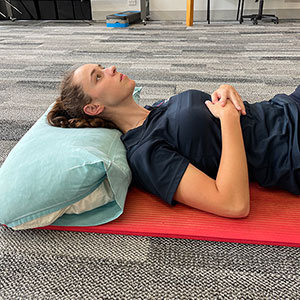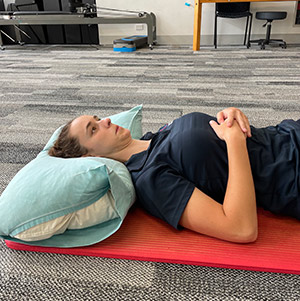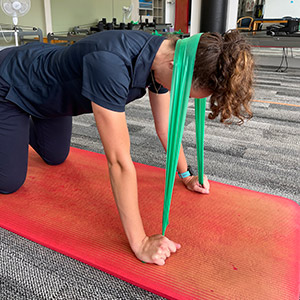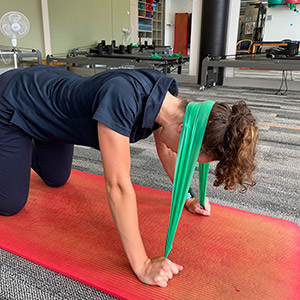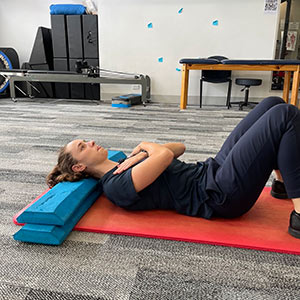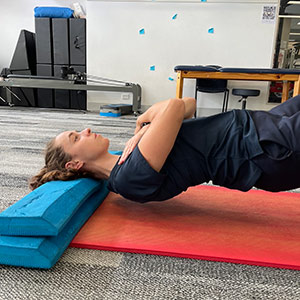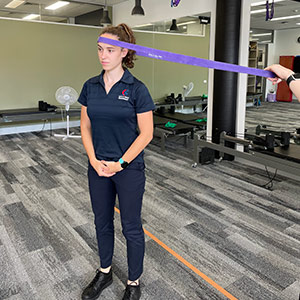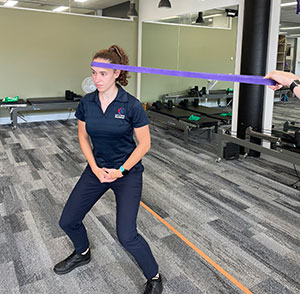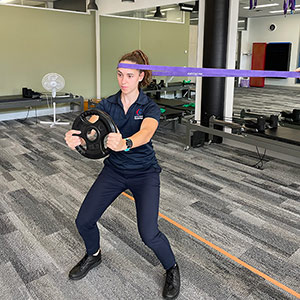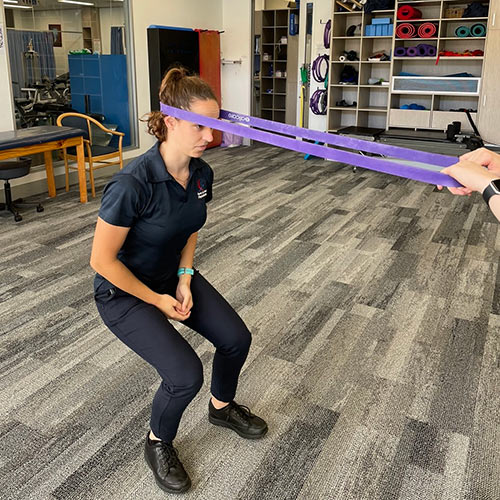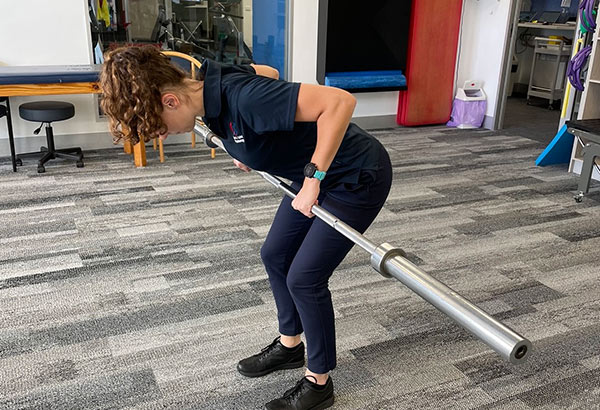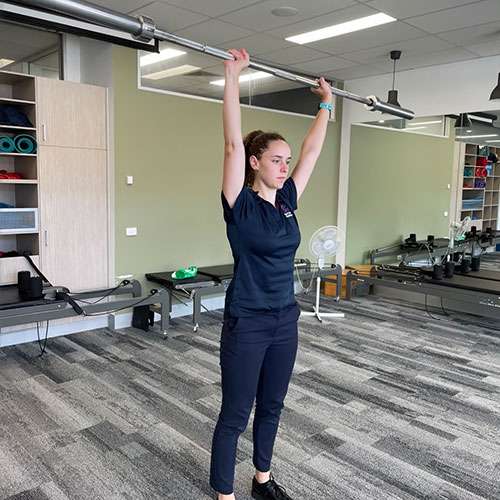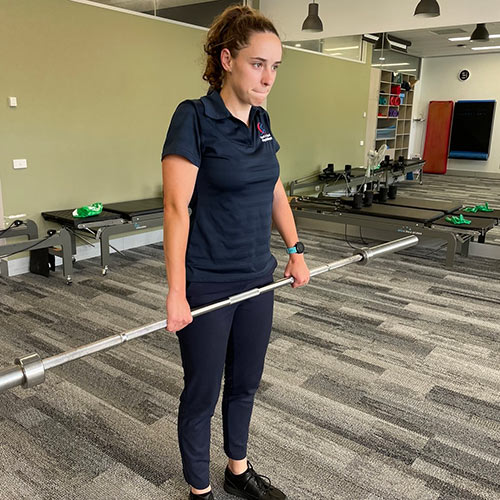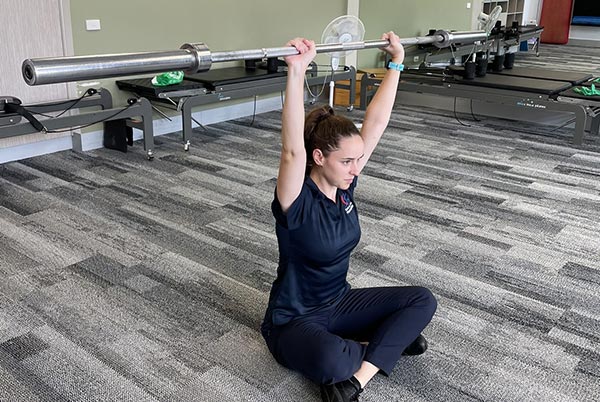Top 9 Neck & Upper Back Strength Training Exercises
Neck exercises and upper back exercises are often ignored by recreational athletes in their training programs. This article covers some great neck exercises and upper back exercises and is a great time to review and revise your regular strength and conditioning program.
A typical program for recreational athletes includes 1-3 strength sessions per week. Typically these sessions reduce during the season and increase in the off season. During these sessions, there is ample opportunity to strengthen those weaker areas of the body.
At Sport & Spinal Physiotherapy, we often see the neck and upper back neglected in gym programs. One reason for this is athletes being unaware of how to train the neck and upper back. It is certainly an area of the body most gym-goers do not think to train. Another reason for this is athletes being unaware of the benefits! There are a multitude of benefits of strength training the neck and upper back, particular for contact sport athletes.
Strength Training Can Reduce Your Risk of Concussion
Players of contact sports such as soccer, rugby, rugby league and AFL are at high risk of sustaining concussion. A prospective study published in 2016 found rugby union to have the highest rate of concussion. Per 1000 hours of rugby gameplay, saw on average 9 concussions occur in one team.
Concussions are classified as a mild traumatic brain injury, sustained due to ‘shaking’ forces being apply to the head. In rugby, this most commonly occurs when making a tackle. The ‘shaking’ force causes the brain to ‘bounce’ around inside the skull and damages to the nerve cells. Concussions are a significant burden to athletes, both in their personal life and sporting life.
Concussions have a significant impact on capacity to train and play sport. The average time loss due to concussion in a study of rugby players was 11 days. Only 8% of players with concussions returned to play in the week following their injury. Furthermore, the risk of subsequent concussions increases with each one. A study published in 2018 young athletes reporting a past history of concussion were twice as likely to experience subsequent concussions. The take home message here is prevention is key!
A study published in 2014 demonstrated several neck assessment measures were associated with increased risk of concussion. Higher neck strength, larger neck circumference and large neck to head circumference ratio were all associated with reduced risk of concussion. For every one pound (~450 grams) of increased neck strength, the risk of concussion reduced by 5%!
Reduce Risk of Neck and Shoulder pain with Neck Exercises
Neck and shoulder pain is one of the most common issues we see at Sport & Spinal Physiotherapy. It is uncomfortable, debilitating and impacts significantly on the ability for most people to complete their usually daily tasks. There are a multitude of reasons why neck and shoulder pain occurs. Some are related to a traumatic incidents, such as whiplash. While others are related to posture and daily demands.
Neck exercises that includes strengthening has been shown to decrease shoulder and neck pain in fighter pilots. I hear what you are saying; I am not a fighter pilot! However, anecdotally, our therapists can attest to the large number of recreational athletes they see at our clinics who have neck and shoulder pain, and who have greatly benefited from a neck and upper back strengthening program.
Neck Exercises for Strength
All strengthening exercises take at least 6 weeks to drive muscle growth. This is why habits are critical when it comes to performance and injury prevention. The American College of Sports Medicine recommend strength training be performed on two non-consecutive days per week. Each training session should consist of 8-10 exercises, with 2-3 sets of 8-12 repetitions. The weight used can be progressed every 2-4 weeks. The difficult part of neck strengthening is we cannot simply carry dumbbells or add more weights onto the bar to progress… As such we need to get a bit creative! To ensure you begin strengthening your neck in a safe manner, please consult with a physiotherapist prior.
Exercise 1: Head Lift/Chin Tuck
- Keep your face pointed to the ceiling, lift your head off the pillow, hold for 5 seconds
- Push head back into the pillow, squashing it for 5 seconds
Exercise 2: Retraction into Theraband
- Start with the shoulder blades back and a small amount of tension on the band
- Push shoulder blades forward, increasing resistance on the band
- Keep your neck in a neutral position but facing the floor
Exercise 3: Bridge on Neck
- Maintain your neck position while lifting your upper back and pelvis off the floor
- This is a challenging exercise, it is very testing of your upper back and neck strength
Exercise 4: Resisted side bending of the neck
- With the band looped around your head, slowly step sideways into a squat
- The resistance from the band will increase
- Focus is on maintaining head and neck position throughout the movement
- You can make this more difficult by holding a weight in front of you
Exercise 5: Partner assisted drag
- Loop band around your head, have a partner hold the other end and apply some resistance
- Maintain head and neck position while slowly walking backwards into the resistance
Upper Back Exercises Strength Training
Upper back strengthening is a great way to build tolerance to the demands of contact sports. As mentioned above, most concussion occur when players are making a tackle. In this position, their arms are out wide, and impact is made with the shoulder or upper arm.
Exercise 1: Barbell row
- Hold onto a barbell, pull towards your chest
- Try to keep your head and chest facing the floor
Exercise 2: Overhead press
- Start by holding the barbell to your chest
- Push your arms straight and the barbell overhead
- Focus on looking forward and avoid leaning back
Exercise 3: Shrug
- Hold a barbell at waist height, lean forward slightly
- Shrug your shoulders up and back
- Try not to make a face
Exercise 4: Seated Overhead Hold
- Start by sitting on the floor, either with your legs crossed or out in front of you
- Focus on leaning forward slightly rather than leaning back with your chest out
- Try to hold this position for 30-45 seconds
Enjoy these exercises and benefit from having a stronger neck and upper back. As mentioned above, please seek out guidance from one of our trained physiotherapists before starting these exercises.
References:
- Abrahams, Fie, S. M., Patricios, J., Posthumus, M., & September, A. V. (2014). Risk factors for sports concussion: an evidence-based systematic review. British Journal of Sports Medicine, 48(2), 91–97. https://doi.org/10.1136/bjsports-2013-092734
- Cross, Kemp, S., Smith, A., Trewartha, G., & Stokes, K. (2016). Professional Rugby Union players have a 60% greater risk of time loss injury after concussion: a 2-season prospective study of clinical outcomes. British Journal of Sports Medicine, 50(15), 926–931. https://doi.org/10.1136/bjsports-2015-094982
- Lange, Toft, P., Myburgh, C., & Sjøgaard, G. (2013). Effect of Targeted Strength, Endurance, and Coordination Exercise on Neck and Shoulder Pain Among Fighter Pilots: A Randomized-controlled Trial. The Clinical Journal of Pain, 29(1), 50–59. https://doi.org/10.1097/AJP.0b013e3182478678
- Prien, Grafe, A., Rössler, R., Junge, A., & Verhagen, E. (2018). Epidemiology of Head Injuries Focusing on Concussions in Team Contact Sports: A Systematic Review. Sports Medicine (Auckland), 48(4), 953–969. https://doi.org/10.1007/s40279-017-0854-4
- Schmidt, Rizzone, K., Hoffman, N. L., Weber, M. L., Jones, C., Bazarian, J., Broglio, S. P., McCrea, M., McAllister, T. W., Hoy, A., Hazzard, J. B., Kelly, L. A., Ortega, J. D., Port, N., Putukian, M., Langford, D., O’Donnell, P. G., Giza, C. C., Benjamin, H. J., … Svoboda, S. J. (2018). Age at First Concussion Influences the Number of Subsequent Concussions. Pediatric Neurology, 81, 19–24. https://doi.org/10.1016/j.pediatrneurol.2017.12.017
